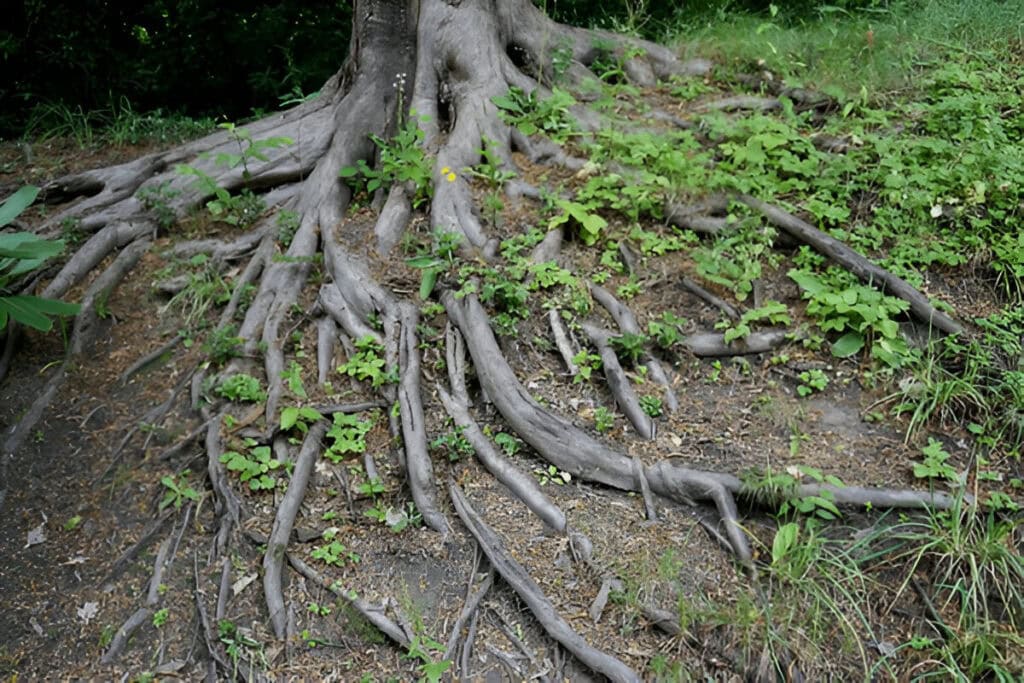If you’ve ever walked around your yard or through a park and noticed tree roots sticking out of the ground, you might have wondered, “Is that bad for the tree? Or is it just how trees grow?” The answer isn’t always simple. Exposed tree roots can be a natural part of a tree’s life, but sometimes they point to bigger problems. Let’s dig in and explore what’s going on.
Why Do Tree Roots Become Exposed?
To understand whether exposed roots are a problem, it helps to know why they show up in the first place. Tree roots grow near the surface because that’s where they find the most oxygen, water, and nutrients. In some cases, soil erosion makes roots that were once hidden suddenly visible. Heavy rain, wind, or even foot traffic can wear away the soil around a tree, leaving its roots sticking out.

Certain types of trees are more likely to have visible roots. For example, maples, oaks, and willows often have shallow root systems. If you’ve got one of these trees in your yard, exposed roots might just be part of its natural design.
When Are Exposed Roots a Problem?
Here’s the thing: while exposed roots aren’t always bad, they can cause trouble in certain situations. For example, if roots are getting damaged—maybe from a lawnmower running over them or people walking on them—the tree could suffer. Wounds in the roots can let pests and diseases in, weakening the tree over time.
Also, exposed roots might mean the tree is struggling. If a tree’s roots are coming up because the soil is compacted or too wet, it might not be getting the nutrients it needs. Imagine trying to grow in hard, packed-down dirt or soggy mud—it’s not easy! Your tree might be sending out roots to find better conditions.
How Can Exposed Roots Affect You?
Exposed roots don’t just affect the tree. They can cause problems for you, too. Think about it: those big, bumpy roots can be a tripping hazard, especially for kids running around. They can also make mowing the lawn tricky. And if roots grow under sidewalks, they can lift and crack the concrete, leading to expensive repairs.
What Can You Do About Exposed Roots?
If you have a tree with exposed roots, don’t panic. You’ve got options! First, avoid damaging the roots. Skip mowing or digging near them. Instead, add a layer of mulch around the base of the tree. Mulch can help protect the roots, keep moisture in the soil, and reduce erosion. Just don’t pile it up against the trunk, or you might invite rot.
If erosion is the issue, consider planting ground cover plants around the tree. Plants like ivy or creeping thyme can help hold the soil in place and reduce future erosion. If you’re dealing with roots breaking through sidewalks or causing other major problems, it’s time to call in an arborist. They’ll help you figure out the best solution without hurting your tree.
A Real-Life Example
A neighbor of mine had a big oak tree in her yard with roots popping up everywhere. Her kids kept tripping over the roots, and she worried the tree was unhealthy.
She called in an arborist, who explained that the roots were normal for an oak tree and suggested adding mulch to protect them. The arborist also pointed out that the tree’s soil was too compacted, which wasn’t helping. My neighbor aerated the soil and added mulch, and now her tree is thriving—and her kids can play safely.
Trust Your Tree’s Story
Trees are tougher than they look, but they still need care. If you’ve got a tree with exposed roots, take a closer look. Are the roots damaged? Is the tree showing signs of stress, like fewer leaves or dead branches? You don’t have to figure it all out on your own. An experienced arborist can help you understand what’s going on and what’s best for your tree.
By paying attention to your tree and giving it the care it needs, you can keep it healthy for years to come. And who knows? That tree might just become the perfect spot for a picnic, a swing, or some much-needed shade on a hot summer day.

